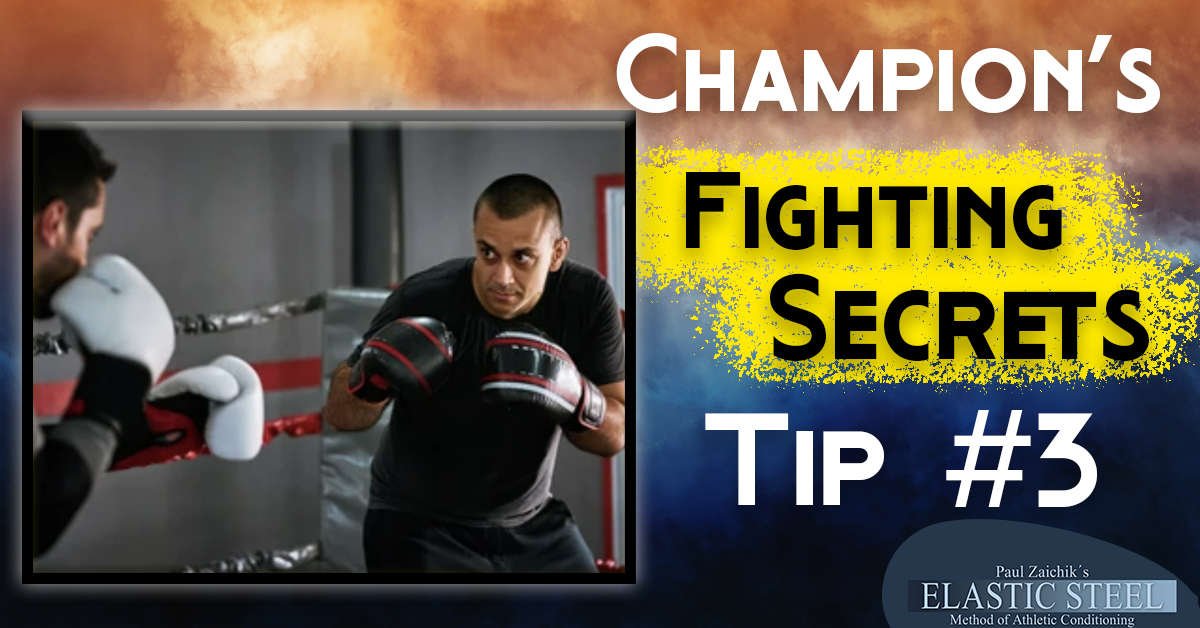Champions Fighting Secrets Tip #3: Off-Rhythm Position Changes

Off-Rhythm Position Changes.
Change all the time without a pattern or detect when your opponent is about to strike and change at that point. The first one is much easier because you get to control what your body does how it wants to do it, and when it wants to do it.
The second one is more difficult because it depends on your opponent. I’d like to give you a few examples of what this means.
His strategy severely confused me.
A long time ago I used to spar when I was a beginner student and one time a new student came into the school. He also seemed to have been a beginner student, but he had a very interesting strategy. He would switch his stances all the time, from left to right, from angle to sideline, etc., He would also frequently change his levels another words standing on straight legs versus crouching down a little bit or squatting down a little bit. He would also change his arm positions with both arms down, one arm down, both arms up, one in the middle and so on.
I don't know if he was taught this strategy since he came from another school or he has discovered this strategy on his own. But it severely confused me. I would just see a target and about to go for it and the target was gone. He didn't move when he thought I was going to attack, he just kept moving. Now this didn't really give him an opportunity to attack me, and I don't think he was trying to do that, but, he made it very difficult for me to attack him.
ElasticSteel Champions' Fighting Secrets Online On Demand Training Course.
In this Online Training Course you will learn:
In this Online Training Course you will learn:
- How to stay out of your opponent’s line of attack.
- How to keep your opponent within your own line of attack.
- How to stay out of your opponent’s striking range.
- How to keep your opponent within your own striking range.
- How to keep your opponent always uncertain.
- How to stay in balance while keeping your adversary out of balance.
- How to strike when your opponent is not ready to defend.
- How to be in constant advantageous position throughout the fight.
- How to interpret your opponent’s movement patterns.
- How to confuse your opponent with your own movement patterns.
- How to adjust your footwork angles and body language to take away any natural attributes and skill advantage that your opponent may have.
He did it differently
Forward few years I had an opportunity to spar a very experienced opponent. He did it differently. He would stand and as I was about to attack he could sense it he would do the same thing he would also make changes not necessarily angle out not necessarily change the distance but simply change the position of his body. and naturally I had to stop my attack on my own because I knew that the target is no longer available and if I attack and I don't hit a target, there’s a very high chance that he would return the favor, from a much better position than I was.
Over the years I have worked on both of these strategies and I have learned how to employ them in the right time dependent on what my opponent was able to do and what my opponent was trying to do.
If you’re a beginner and have a lot of energy
If you're a beginner or if you have a lot of energy it's a good idea to simply keep switching. Of course, you must practice this because if you don't, under stress, under pressure you can fall into patterns. in other words your pattern might be you stay high with left leg in front both arms up you switched to the right leg in front you drop the front hand then you go low and then you switch back and then you keeps switching like. And if you establish that pattern after few times your opponent will see that pattern.
So it takes some practice to be able to move. With each new move or each new change in position when your opponent is about to attack. But again, it does require a lot of understanding of your opponent. Especially if this is a new opponent and you’ve never spared him or her before, and you don't know what they are going to do, it might make sense to do this. It also helps you to feel your opponent out to see their reaction.
ElasticSteel Champions' Fighting Secrets Online On Demand Training Course.
In this Online Training Course you will learn:
In this Online Training Course you will learn:
- How to stay out of your opponent’s line of attack.
- How to keep your opponent within your own line of attack.
- How to stay out of your opponent’s striking range.
- How to keep your opponent within your own striking range.
- How to keep your opponent always uncertain.
- How to stay in balance while keeping your adversary out of balance.
- How to strike when your opponent is not ready to defend.
- How to be in constant advantageous position throughout the fight.
- How to interpret your opponent’s movement patterns.
- How to confuse your opponent with your own movement patterns.
- How to adjust your footwork angles and body language to take away any natural attributes and skill advantage that your opponent may have.
If you are trying to conserve energy.
On the other hand if you’re trying to conserve energy and you have a very good understanding of what your opponent does. Have very good control of your body to switch instantly, being very aware of every possible opening point on his body, so that when you switch positions you would close each of those points, then you can go with the other option.
Watching professional fights sometimes what I would see top level champions do is use both of these strategies. They would use the first option, in the beginning maybe for one or two sometimes three rounds, and then they would switch to the second option.
If you want to learn more I cover all of this and much more in the ElasticSteel Champions’ Fighting Secrets Online On Demand Video Training Course. Click here to learn more:
ElasticSteel Champions' Fighting Secrets Online On Demand Training Course.
In this Online Training Course you will learn:
In this Online Training Course you will learn:
- How to stay out of your opponent’s line of attack.
- How to keep your opponent within your own line of attack.
- How to stay out of your opponent’s striking range.
- How to keep your opponent within your own striking range.
- How to keep your opponent always uncertain.
- How to stay in balance while keeping your adversary out of balance.
- How to strike when your opponent is not ready to defend.
- How to be in constant advantageous position throughout the fight.
- How to interpret your opponent’s movement patterns.
- How to confuse your opponent with your own movement patterns.
- How to adjust your footwork angles and body language to take away any natural attributes and skill advantage that your opponent may have.
© ElasticSteel Corp., EasyFlexibility, Paul Zaichik, et. El., 2022. No part of the materials available through ElasticSteel.com, EasyFlexiiblity.com, site may be copied, photocopied, reproduced, translated or reduced to any electronic medium or machine-readable form, in whole or in part, without prior written consent of Paul Zaichik EasyFlexibility.com, Elasticsteel.com.. Any other reproduction in any form without the permission of Paul Zaichik EasyFlexibility.com, Elasticsteel.com is prohibited. All materials contained on this site are protected by United States copyright law and may not be reproduced, distributed, transmitted, displayed, published or broadcast without the prior written permission of Paul Zaichik, EasyFlexibility.com, Elasticsteel.com.


Leave a comment